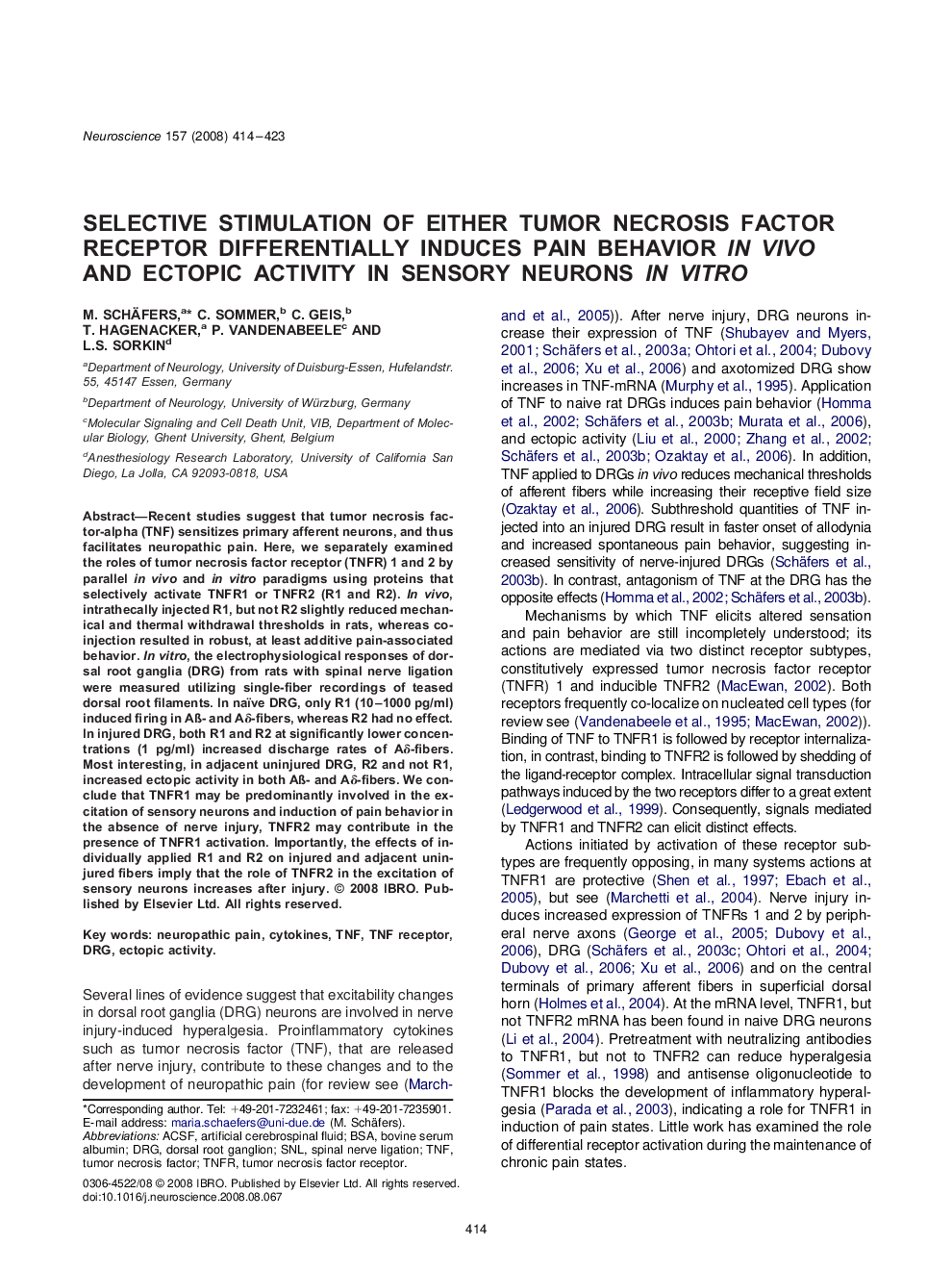| Article ID | Journal | Published Year | Pages | File Type |
|---|---|---|---|---|
| 4340520 | Neuroscience | 2008 | 10 Pages |
Recent studies suggest that tumor necrosis factor-alpha (TNF) sensitizes primary afferent neurons, and thus facilitates neuropathic pain. Here, we separately examined the roles of tumor necrosis factor receptor (TNFR) 1 and 2 by parallel in vivo and in vitro paradigms using proteins that selectively activate TNFR1 or TNFR2 (R1 and R2). In vivo, intrathecally injected R1, but not R2 slightly reduced mechanical and thermal withdrawal thresholds in rats, whereas co-injection resulted in robust, at least additive pain-associated behavior. In vitro, the electrophysiological responses of dorsal root ganglia (DRG) from rats with spinal nerve ligation were measured utilizing single-fiber recordings of teased dorsal root filaments. In naïve DRG, only R1 (10–1000 pg/ml) induced firing in Aß- and Aδ-fibers, whereas R2 had no effect. In injured DRG, both R1 and R2 at significantly lower concentrations (1 pg/ml) increased discharge rates of Aδ-fibers. Most interesting, in adjacent uninjured DRG, R2 and not R1, increased ectopic activity in both Aß- and Aδ-fibers. We conclude that TNFR1 may be predominantly involved in the excitation of sensory neurons and induction of pain behavior in the absence of nerve injury, TNFR2 may contribute in the presence of TNFR1 activation. Importantly, the effects of individually applied R1 and R2 on injured and adjacent uninjured fibers imply that the role of TNFR2 in the excitation of sensory neurons increases after injury.
